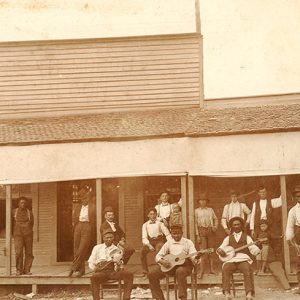Race and Ethnicity: African American
Appeal of the Arkansas Exiles to Christians throughout the World
 Jesse W. Arbor
Jesse W. Arbor
Arbor, Jesse Walter
Argenta Race Riot of 1906
aka: Lynching of Homer G. Blackman
Arkadelphia Baptist Academy
Arkadelphia Executions of 1889
Arkadelphia Lynching of 1879
aka: Lynching of Daniels Family
Arkadelphia Presbyterian Academy
Arkansas “Scottsboro” Case
aka: Bubbles Clayton and James X. Caruthers (Trial and Execution of)
aka: James X. Caruthers and Bubbles Clayton (Trial and Execution of)
Arkansas Association of Black Psychology Professionals
Arkansas Association of Colored Women
aka: Arkansas Association of Colored Women’s and Girls Federated Clubs, Inc.
aka: Arkansas Association of Women’s Clubs, Inc.
aka: Arkansas Association of Women, Youth, and Young Adults Clubs, Inc.
 Arkansas Baptist College
Arkansas Baptist College
Arkansas Black Hall of Fame
 Arkansas City Cotton Picker
Arkansas City Cotton Picker
Arkansas Council on Human Relations (ACHR)
 Arkansas Farm Bureau, Negro Division
Arkansas Farm Bureau, Negro Division
Arkansas Freeman
Arkansas Medical, Dental, and Pharmaceutical Association
Arkansas Negro Democratic Association (ANDA)
Arkansas River near Little Rock, Expedition on the
Arkansas State Capitol, Desegregation of the
Arkansas State Press
Arkansas Teachers Association (ATA)
 "Arkansas Traveler"
"Arkansas Traveler"
Armstrong III, Ralph Waldo
 African-American Band
African-American Band
 Ashley County Lynching
Ashley County Lynching
Ashley County Lynching of 1857
 Eliza Jane Ashley Citation
Eliza Jane Ashley Citation
 Eliza Jane Ashley
Eliza Jane Ashley
 Eliza Jane Ashley
Eliza Jane Ashley
 Eliza Jane Ashley
Eliza Jane Ashley
Ashley, Eliza Jane
Atkins Race War of 1897
Atkins, Jerry (Lynching of)
Atkinson, Wash (Lynching of)
 "Geese" Ausbie
"Geese" Ausbie
Ausbie, “Geese”
aka: Hubert Ausbie
 "Geese" Ausbie
"Geese" Ausbie
 "Geese" Ausbie
"Geese" Ausbie
Austin v. The State
Avery, Andrew (Lynching of)
 Awaiting Passage to Liberia
Awaiting Passage to Liberia
Back-to-Africa Movement
Bailey, George (Lynching of)
Bailey, James (Lynching of)
Baker, Eugene (Lynching of)
Baker, Oliver Keith
 Oliver Baker
Oliver Baker




